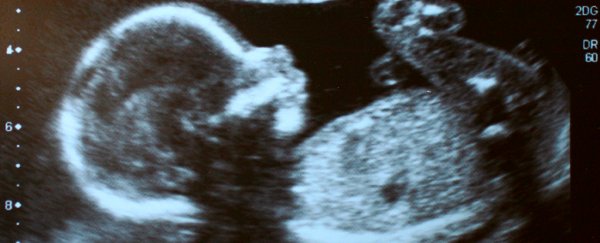It's been nearly six decades since suspicions first arose that a common anti-nausea drug named thalidomide was responsible for shocking deformities in infants.
The tragedy now serves as an infamous reminder of the importance of clinical testing and strict drug regulation. But the mechanisms behind thalidomide's side-effects have remained a mystery, until now.
Scientists at the Dana-Farber Cancer Institute in the US have discovered how thalidomide breaks down a surprising variety of proteins that control how genes are translated.
One of these transcription proteins – called sal-like protein 4 (SALL4) – plays a central role in holding embryonic stem cells in a blank state. Without it, tissues in developing embryos can fail to complete organs and limbs.
The discovery goes some way to explaining why many mothers who took the drug under commercial names such as Contergan or Distaval miscarried or delivered children who had malformed digits, limbs, or organs.
"The similarities between the birth defects associated with thalidomide and those in people with a mutated SALL4 gene are striking," says pharmacologist Eric Fischer.
"They make the case even more strongly that disruption of SALL4 is at the root of the devastation produced by thalidomide in the 1950s."
Thalidomide was first synthesised by a small German pharmaceutical company called Chemie Grünenthal early in 1954. Animal testing showed it wasn't toxic at even large doses, and two years later it was found to be safe for adults as a sedative.
By the end of the decade the drug was sold worldwide under a variety of brand names, and commonly used to ease the nausea of morning sickness, but a delay in FDA approval spared the US from the tragedy that would unfold.
German physicians noticed a strange surge in infant deformities towards the end of the 1950s.
In 1960, a paediatrician named Widukind Lenz finally made the link, and after a public uproar, Grünenthal removed all thalidomide medications from the market.
The rest of the world was slower to act, but by the end of 1962 the product had all but disappeared from pharmacy shelves across the globe.
Though relatively brief, thalidomide's period of popularity saw more than 120,000 infants affected. Most cases resulted in miscarriages, but around 10,000 babies were born with truncated arms and legs, or conditions such as Duane Radial Ray Syndrome.
Decades of lawsuits and media scrutiny of testing procedures have since examined the bureaucratic failures that contributed to the problem, but surprisingly little has been known about the biochemistry behind the drug.
This isn't just a matter of easing morbid curiosity, either. In the 1980s, thalidomide was reborn in the form of a powerful cancer treatment, thanks to its ability to impede the growth of blood vessels in tumours.
The biochemistry behind the drug's therapeutic effects has only been pinned down in recent years. Understanding the precise origins of its debilitating effects on tissue development will hopefully go a long way to overcoming its stigma.
Following on from previous research, researchers treated human cell cultures with thalidomide and its chemical relatives and looked through the protein products for signs of its impact using a mass spectrometry-based workflow.
Of 10,000-odd proteins in their analysis, only SALL4 showed a significant difference following each of the thalidomide-like drugs. This isn't all that surprising, since mutations in both copies of the gene that makes this protein can produce similar conditions in foetal development.
What is interesting is different members of the drug family each degraded a variety of proteins – information that could prove useful in future modifications of the pharmaceutical.
In addition, the researchers found the effects of thalidomide only apply to primates (including humans) and rabbits, and not rodents. Testing on rats, in other words, would not show the same devastating results.
Thalidomide still has huge potential. Rather than walk away from a drug that could save lives, it's vital we learn as much as we can about how it works.
"We know that the therapeutic effect of these drugs is based on their ability to degrade specific proteins," says Fischer.
"Our findings will help drug developers distinguish between proteins whose degradation is likely to be beneficial and whose may be harmful."
This research was published in eLife.
